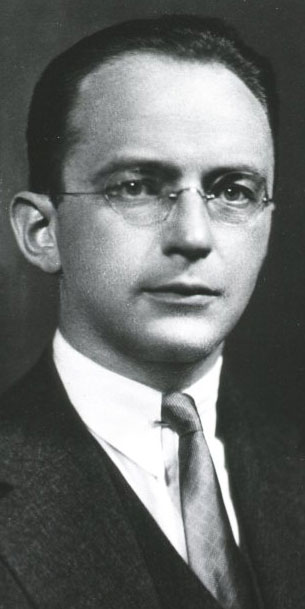Soma Weiss, an HMS professor of medicine and chief of medicine at the former Peter Bent Brigham Hospital, achieved considerable success during his brief life, not only because of his groundbreaking discoveries but because of the towering influence he had on succeeding generations of medical practitioners.

This month, Weiss’s life and legacy will again be honored when students and faculty gather for the 75th Annual Soma Weiss Student Research Day on Jan. 15, 2015, in the Medical Education Center (TMEC) at HMS.
Approximately 200 students will showcase their research with oral presentations and poster sessions. The goal is to give the wider HMS community insight into student research efforts and to encourage greater networking and collaboration among students, faculty and staff.
Prepared to Work
Soma Weiss came to the U.S. as an immigrant from Hungary in 1920. After completing his education and medical residency at Cornell Medical School, he was recruited to the Thorndike Memorial Laboratory and Harvard Medical Unit at the Boston City Hospital in 1925 by the original chief, Francis Weld Peabody.
Click here to get more HMS news
Weiss arrived prepared to work and hit the ground running, carrying out and publishing research in many areas of medicine, caring for patients, nurturing and educating residents and medical students, and dealing tactfully with the hospital administration.
Appointed clinical director of the Harvard Medical Services in 1932 by the second chief, George Richards Minot, Weiss was omnipresent on the wards as clinician and teacher. Serving until 1939, he attracted the best and the brightest medical graduates for postgraduate training.
Then opportunity came knocking. Weiss became the physician-in-chief at Peter Bent Brigham Hospital and the Hersey Professor of the Theory and Practice of Physic at HMS in September 1939. Replacing Henry Christian, the first physician-in-chief, Weiss brought indomitable enthusiasm, energy and good humor, infusing a new air of excitement into the Brigham.
Teaching, Art and Patients
Weiss employed a cadre of bright young staff (including Eugene Stead, Lewis Dexter, Charles Janeway and John Romano) and resident physicians to extend his medical reach and established exceptionally popular teaching conferences. He encouraged new concepts of studying health and disease, including the exploration of physiology, pathophysiology and pharmacology. Emphasizing the training of residents, Weiss wrote a working monograph for them entitled “Routine Practices: Medical Service of the Peter Bent Brigham Hospital” (1940). His statement epitomized his dedication to the training of HMS students, “If I am asked, I will see the Dean in a week, a staff physician in a day and a medical student immediately!”
Weiss changed the physical appearance of the hospital, hanging reproductive works of art obtained from his father-in-law, Paul Sachs of Harvard’s Fogg Art Museum, and planning major renovations. While doing all this, he was teaching HMS students. His major dedication to their training was epitomized by his statement “If I am asked, I will see the Dean in a week, a staff physician in a day, and a medical student immediately!”
As a legendary clinician, Weiss continued to actively oversee the care of patients. He maintained a deep understanding of the psychodynamics of being a patient and stressed to trainees the importance of being tuned into this aspect of patient care. He shared with HMS Dean C. Sidney Burwell a quotation from T.S. Eliot that he enjoyed: “What one must be judged by, scholar or no, is not particularized knowledge but one’s total harvest of thinking, feeling, living and observing human beings.”
The Chief
While returning from a meeting one day, Weiss developed an excruciating headache, which he realized was caused by a hemorrhage from a brain aneurysm. He was cared for at home by his family members and devoted medical trainees. Suffering another paralyzing headache, he died on Jan. 31, 1942, four days after his 43rd birthday.
Eulogies came from many corners, especially at his memorial service that March. To his trainees, he was, above all, a mover of men and a superstar because of his loving attitude to patients and students.
In an endearing eulogy in the HMS Aesculapiad yearbook later that year, he was described as:
… not gone from us! Not when these halls
Throb with his presence! When continually
We seem to breathe in from the very walls
The essence of his rich vitality!
Forever in our hearts he is the “Chief,”
The great physician, teacher, guide and friend,
A gay blithe spirit poised in bright relief
Against a world of pain. He could transcend
The narrow bounds of earth in daring flight
And give us wings for pathless space above,
Where we might soar in seeking for the light
Of greater knowledge through our greater love;
But, of all the gifts that crowned his healing art,
The rarest was his understanding heart.
Dr. Peter V. Tishler is an associate professor of medicine at Brigham and Women’s Hospital Channing Laboratory. He has previously published a paper “Soma Weiss, Alfred S. Reinhart, and the care of the patient.”


